HUM 293 / REL 293 - Beginning Latin
Pompeii
Pompeii was a town on the western coast of Italy, in a region which is seismically and volcanically active.
Vesuvius, the volcano which destroyed Pompeii and Herculaneum in AD 79, is only one of a number of volcanoes in the Mediterranean. Other volcanoes in this region included Mt. Etna, which is active today, and Acrotiri. The eruption of Acrotiri ca. 1500 BC was the probable main cause of the downfall of the Minoan civilization, and may be the origin of the tale of Atlantis - the land which sank into the sea. All that remains of Acrotiri today is the island of Santorini - the rim of the volcano.
The Romans were not aware that Vesuvius was a threat. The last major eruption, the Avellino Eruption, had been ca. 1800 BC, during the Bronze Age, when nearby settlements were wiped out.
Vesuvius appears to lie dormant for centuries, and then has a period of intermittent activity lasting several centuries, before appearing to go dormant again. The eruption of AD 79 signalled the start of a period of activity which may not yet have ended, although none of the subsequent eruptions were as devastating as that of AD 79.
There have been eruptions in AD 172, 203, 222, possibly 303, 379, 472, 512, 536, 685, 787, around 860, around 900, 968, 991, 999, 1006, 1037, 1049, around 1073, 1139, 1150. There may also have been eruptions in 1270, 1347, and 1500. There was an eruption in 1631, six more during the 18th century, eight in the 19th century (a large one in 1872), and in 1906, 1929, and 1944.
The eruption of 1944 was filmed - I remember watching it at the local cinema.
Vesuvius, Etna, and other volcanic hot-spots are now kept under constant surveillance, and plans are in effect for the evacuation of the population in the event of an eruption.
![]()
Photos of Vesuvius and Pompeii
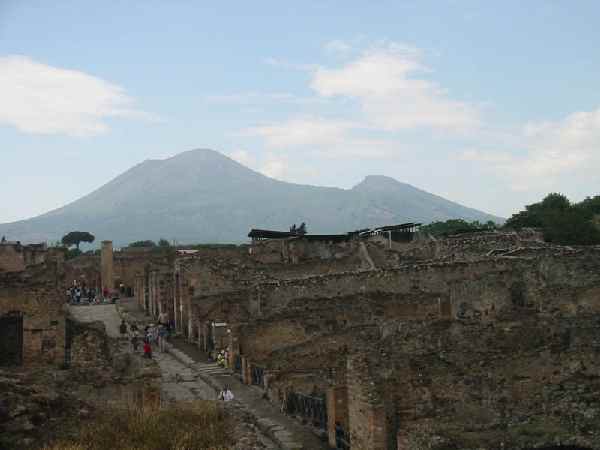
Vesuvius and Pompeii
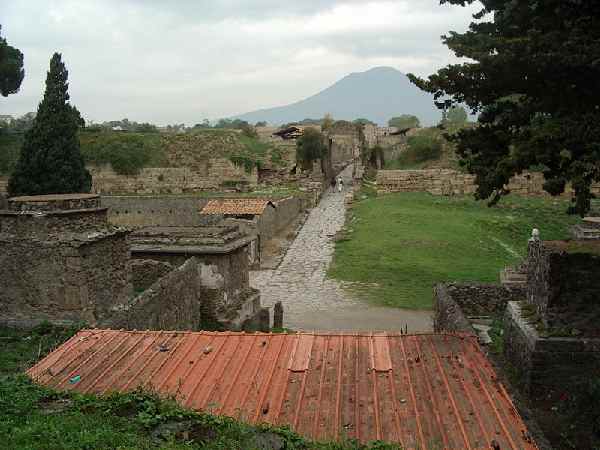
Vesuvius and Pompeii
The original roofs of the buildings collapsed under the weight of ash and stones which fell upon them. Some of the buildings have been partially restored, and roofed over to protect them.
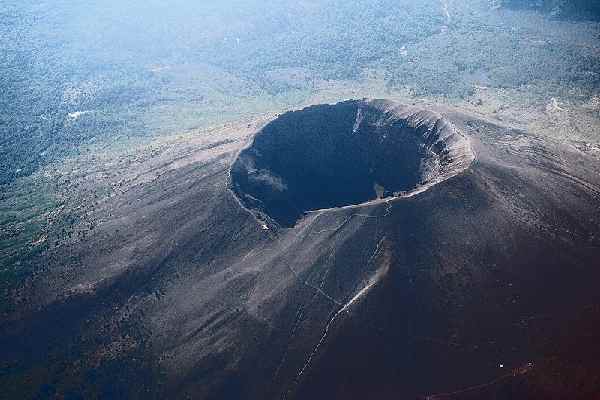
Vesuvius
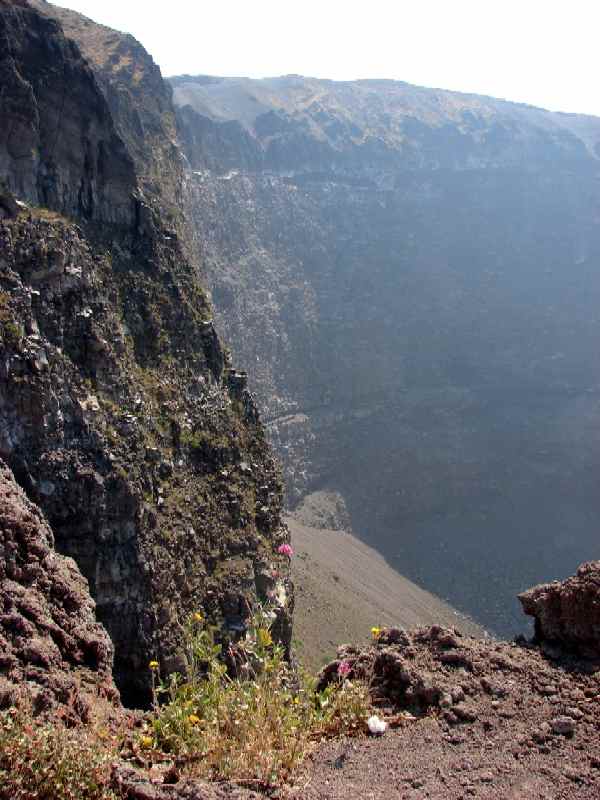
Vesuvius - the caldera
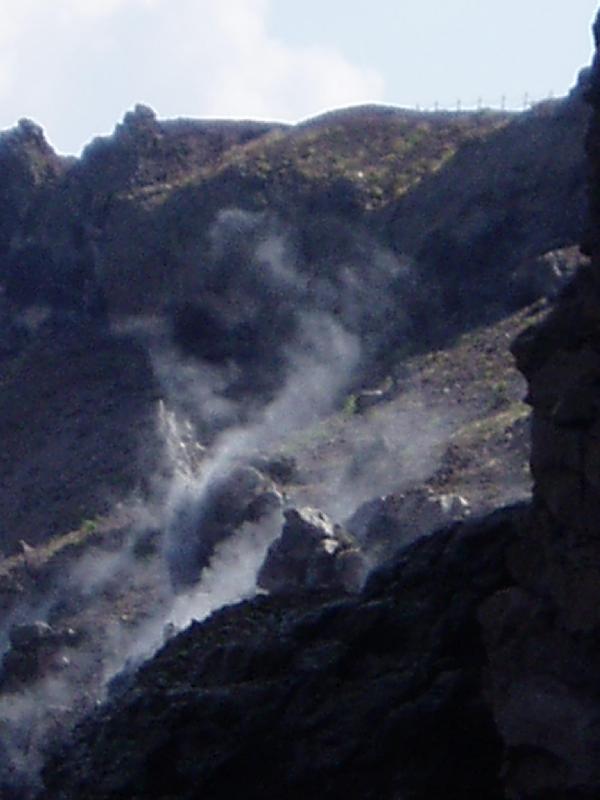
Vesuvius - the caldera
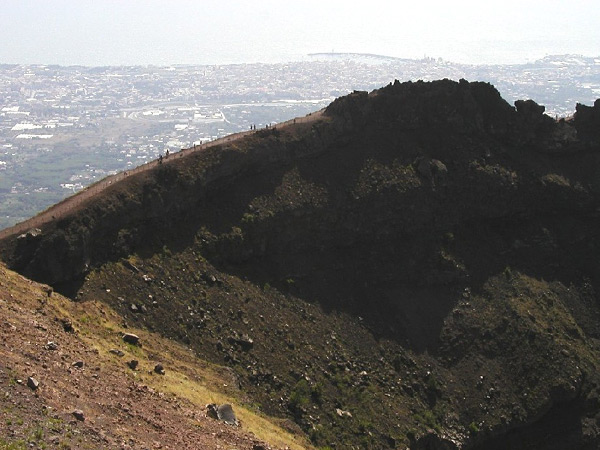
Vesuvius
The Bay of Naples and the surrounding towns can be seen in the distance

The eruption of Vesuvius, March 1944

Aerial view of Pompeii
Compare with the map on p.46 of the Cambridge Course.
The theaters are towards the center of the bottom edge, with the large theater showing up as a green semicircle, and the small theater as the rectangle to its right.
The Amphitheater is off the right-hand side of the photo.
Via Stabiae is the straight broad street running from the small theater towards the top of the photo.
Caecilius' house is on the right side of the Via Stabiae, towards the end of the excavated houses.
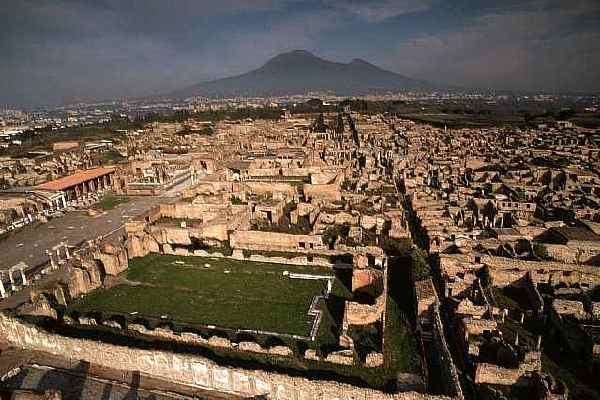
Aerial view of "downtown" Pompeii
The forum is on the left-hand edge of the photo
The large green area is the cloth-workers' Meeting Hall built by the Lady Eumachia.
Caecilius' house is in the far distance to the right of the photo.
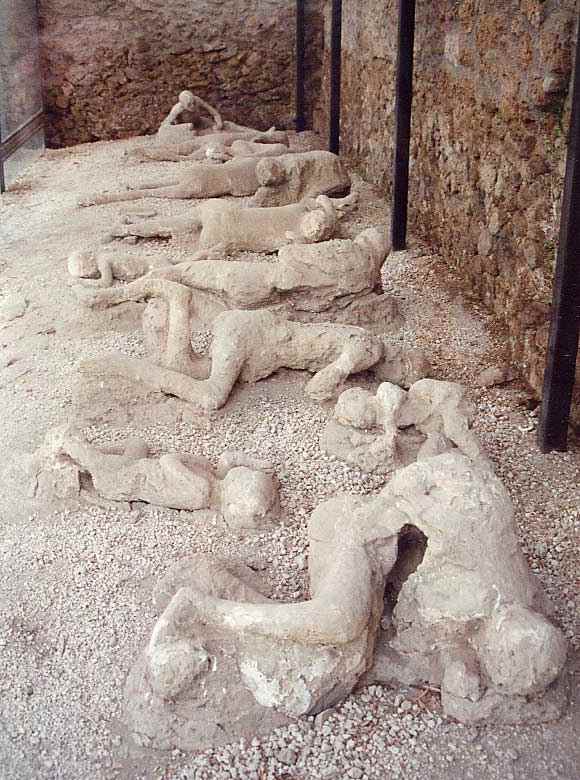
Casts of some of the victims of the eruption.
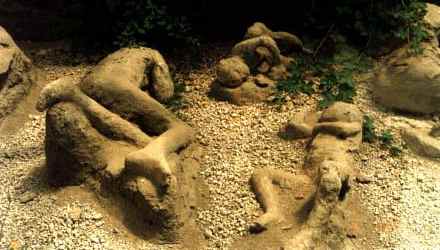
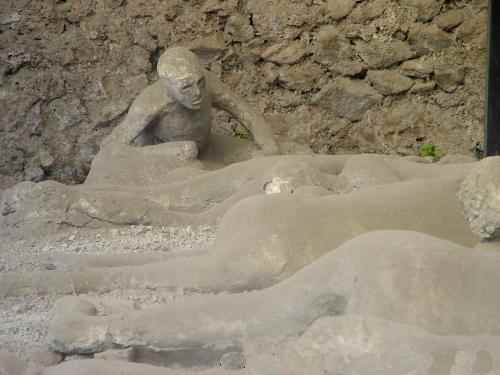
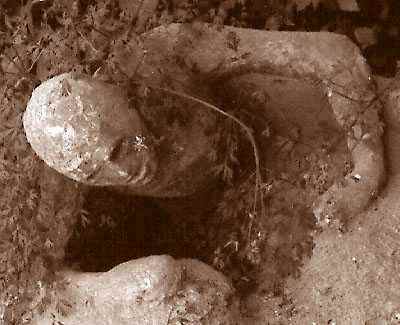
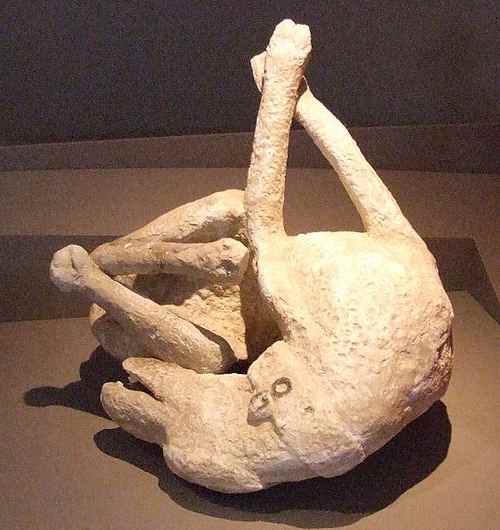
The dog at the Villa Regina
See also :
The Forum at Pompeii
Copyright © 1999 Shirley J. Rollinson, all Rights Reserved